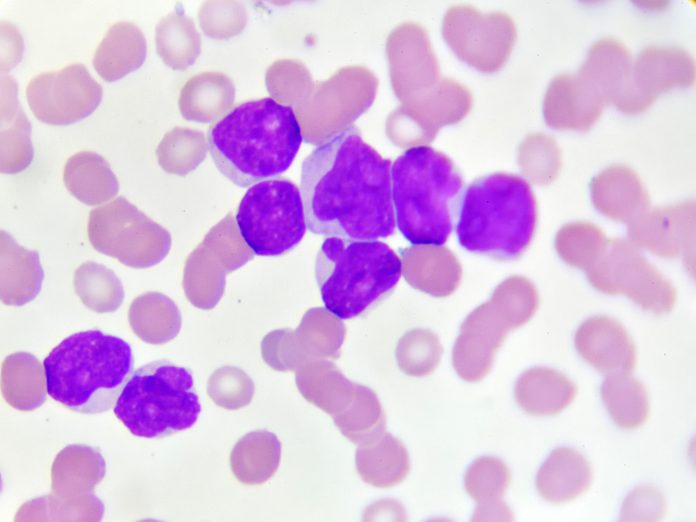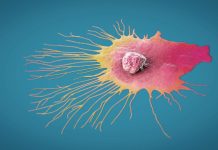
Acute myeloid leukemia (AML) is a cancer of the bone marrow and the blood that progresses rapidly without treatment. Now, scientists at Purdue University’s College of Science and collaborators have developed a patent-pending compound called HSN748 to treat drug-resistant AML.
Their findings are published in the Journal of Clinical Investigation in an article titled, “Alkynyl nicotinamides show antileukemic activity in drug-resistant acute myeloid leukemia.”
“Activating mutations of FLT3 contribute to deregulated hematopoietic stem and progenitor cell (HSC/Ps) growth and survival in patients with acute myeloid leukemia (AML), leading to poor overall survival,” the scientists write. “AML patients treated with investigational drugs targeting mutant FLT3, including Quizartinib and Crenolanib, develop resistance to these drugs. Development of resistance is largely due to acquisition of cooccurring mutations and activation of additional survival pathways, as well as emergence of additional FLT3 mutations. Despite the high prevalence of FLT3 mutations and their clinical significance in AML, there are few targeted therapeutic options available. We have identified two novel nicotinamide-based FLT3 inhibitors (HSN608 and HSN748) that target FLT3 mutations at subnanomolar concentrations and are potently effective against drug-resistant secondary mutations of FLT3.”
Herman Sintim, PhD, led the team that developed the compound. He is a distinguished professor in chemistry and the Richard B. Wetherill Professor of Chemistry and Drug Discovery in the James Tarpo Jr. and Margaret Tarpo Department of Chemistry. He also is on the faculty of the Purdue Institute for Cancer Research and the Purdue Institute for Drug Discovery.
Sintim’s development team collaborated with a group including Reuben Kapur, PhD, director of the Herman B. Wells Center for Pediatric Research and co-leader of the Hematopoiesis and Hematologic Malignancies program at the Indiana University Melvin and Bren Simon Comprehensive Cancer Center, and Baskar Ramdas, PhD, an assistant research professor of pediatrics at the Indiana University School of Medicine.
The team demonstrated that HSN748 effectively treated mice implanted with patient-derived, drug-resistant AML with 100% survivability after 120 days.
Sintim said, “One of the best U.S. Food and Drug Administration-approved drugs right now to treat AML is called gilteritinib (Xospata). But patients have developed genetic mutations in an enzyme called FLT3 that could render gilteritinib ineffective.”
Ramdas said, “Despite the widespread occurrence and clinical importance of FLT3 mutations in causing AML, treatment options tailored to this genetic anomaly are scarce. Our goal was to identify new and powerful inhibitors targeting the mutations, particularly those resistant to currently approved FDA options.”
Sintim used the three-dimensional atomic structure of FLT3 to address the challenges of drug resistance.
“The three-dimensional atomic structure guided the molecular design and synthesis of HSN748 so it fits perfectly into the active site of drug-resistant mutants of FLT3, like a hand fitting into a glove,” Sintim said. “The enzymatic activity of FLT3 is crucial for AML cancer cell survival, so filling in the active site with HSN748 kills the enzyme’s activity and also kills the cancer cells.”
Sintim continued, “Remarkably, while all mice that had been implanted with gilteritinib-resistant human patient AML samples and were treated with HSN748 were alive by day 120, none of the animals treated with gilteritinib survived past day 120, demonstrating the superiority of this investigational drug over the FDA-approved drug.”
Kapur said, “Our preclinical study results have shown incredible promise, and we’re excited to keep the momentum going so AML patients can have more resilient options.”
The next step for the scientists is to develop the compound in clinical trials.













